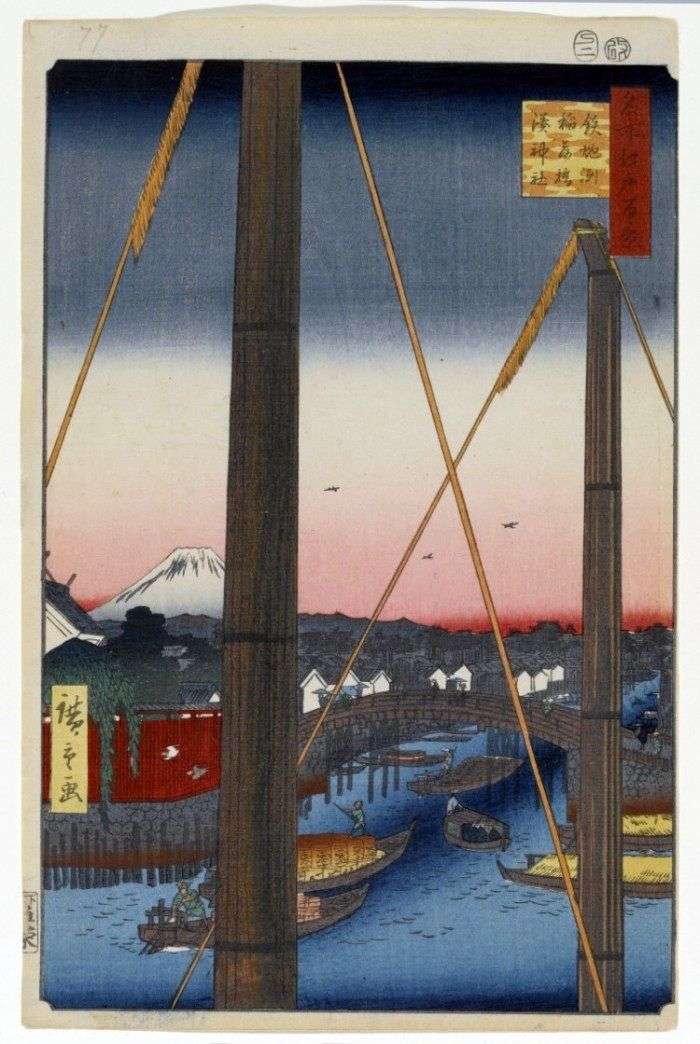
In the foreground, Hiroshige portrayed the masts of two merchant ships through which the Inaribasi Bridge and the Hattebori Canal are visible. A large number of artificial canals were explained by the inadequate depth of the Edo Gulf for the construction of marinas on it. The ships were unloaded in the roadstead, carrying the goods to the boats, which brought them to the berths of the warehouses.
Buildings of warehouses are always recognizable in the engravings of Hiroshige, they are distinguished by the whiteness of the plastered walls and built on one project. It brought rice, sake, vinegar, salt, sauce, and other goods from the Kansai area. In the quarter of Hattebori there were houses of small officials of the Erica – servants in the city government and samurai of the lowest rank – Dozin. Their houses are depicted to the left of the shrine of Minato Inari-jinja, whose red gates are visible in the lower left corner of the engraving. In common speech, it was called Namieke Inari. It was located on the shallows of the Teppzu, indicated in the name of the engraving.
The ground was located at the confluence of the river Kebasigawa in the Sumidagawa River. The masts of the two foreground vessels in the early version are not the same in color, one of them is yellow and the other is gray-brown. In late engraving the color of both masts is dark gray. The coloring of cargo on barges is also changing. The sky, dark red at the horizon, changes to gray-blue, and turns into a dark blue strip at the top.
 Puente Inari-bashi en Teppozu, Santuario de Minato-Jinja – Utagawa Hiroshige
Puente Inari-bashi en Teppozu, Santuario de Minato-Jinja – Utagawa Hiroshige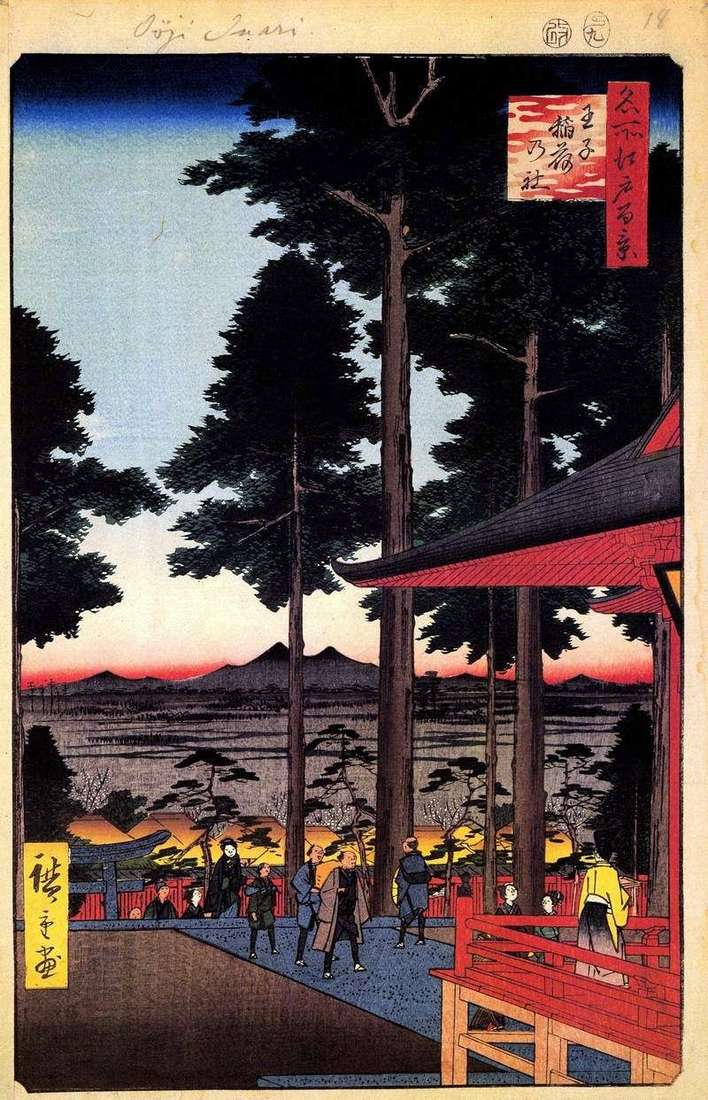 Inari Sanctuary in Ouji by Utagawa Hiroshige
Inari Sanctuary in Ouji by Utagawa Hiroshige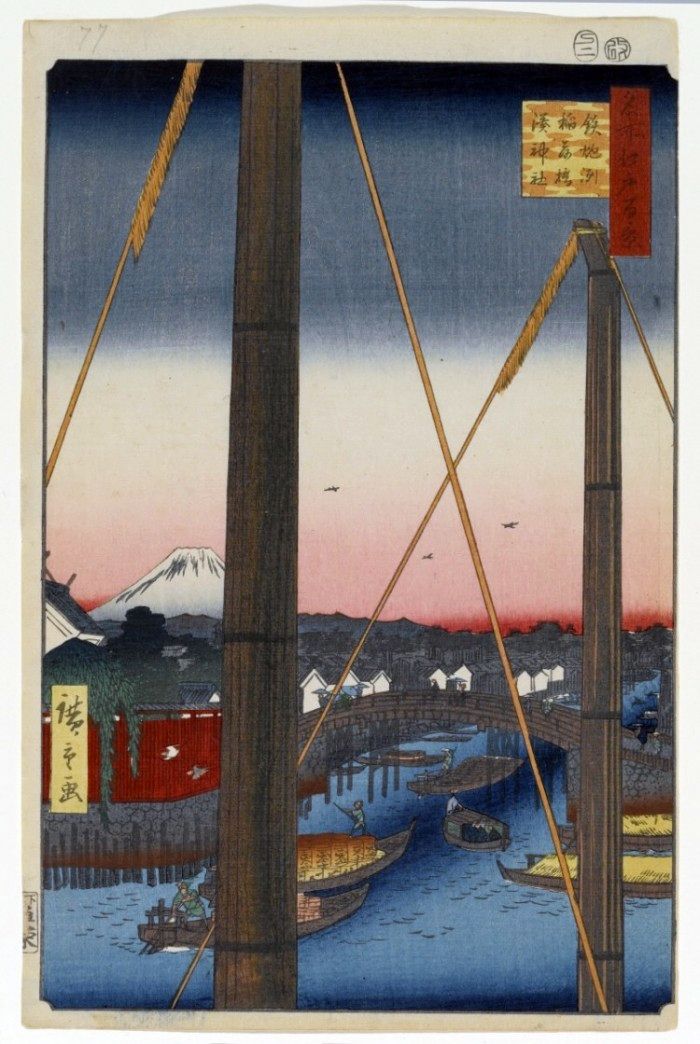 Pont Inari Bashi à Teppoza, sanctuaire Minato-Jinja – Utagawa Hiroshige
Pont Inari Bashi à Teppoza, sanctuaire Minato-Jinja – Utagawa Hiroshige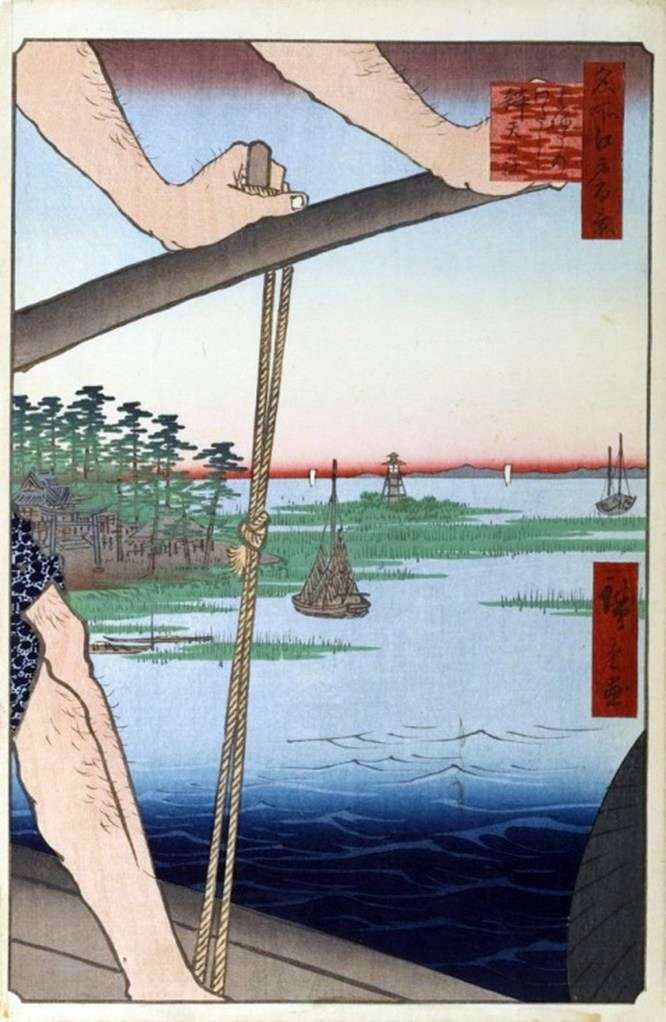 Crossing Haneda, the sanctuary of Benten by Utagawa Hiroshige
Crossing Haneda, the sanctuary of Benten by Utagawa Hiroshige Sanctuary Massaki on the Utigawa River, the village of Sekiya no sato and the sanctuary of Suilzin no Mori by Utagawa Hiroshige
Sanctuary Massaki on the Utigawa River, the village of Sekiya no sato and the sanctuary of Suilzin no Mori by Utagawa Hiroshige Nihonbashi bridge in clear weather after snowfall by Utagawa Hiroshige
Nihonbashi bridge in clear weather after snowfall by Utagawa Hiroshige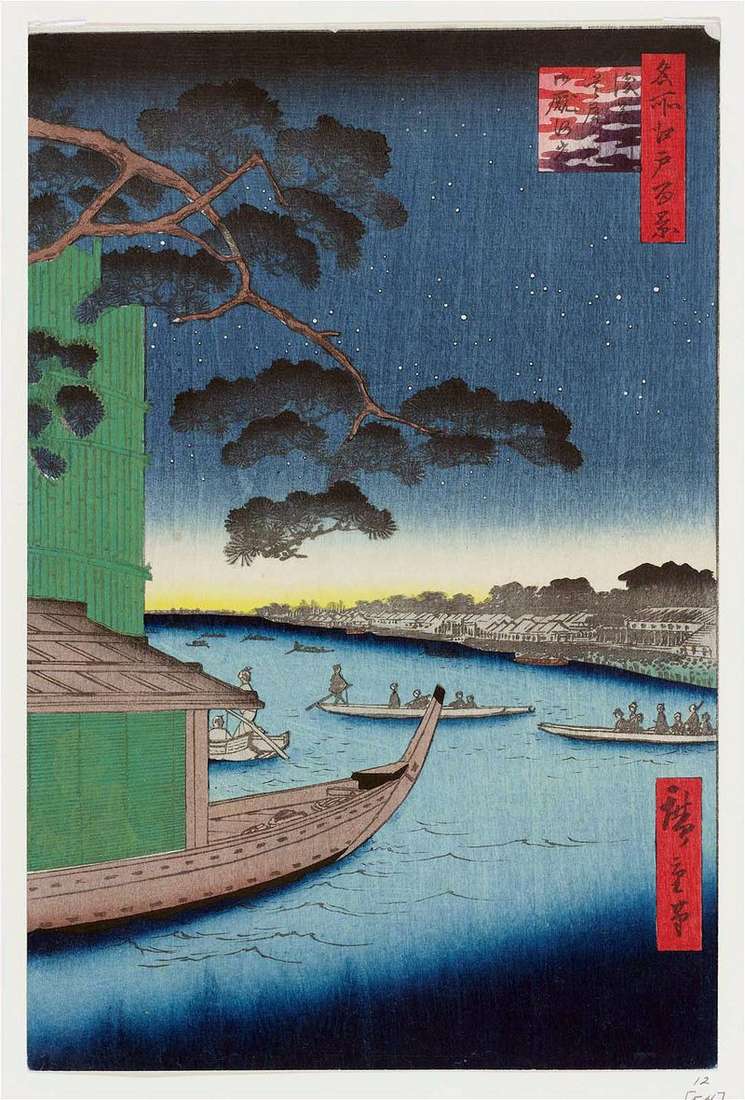 Pine Suube no matzo on the Asakusagawa River, the Ommayagashi Embankment by Utagawa Hiroshige
Pine Suube no matzo on the Asakusagawa River, the Ommayagashi Embankment by Utagawa Hiroshige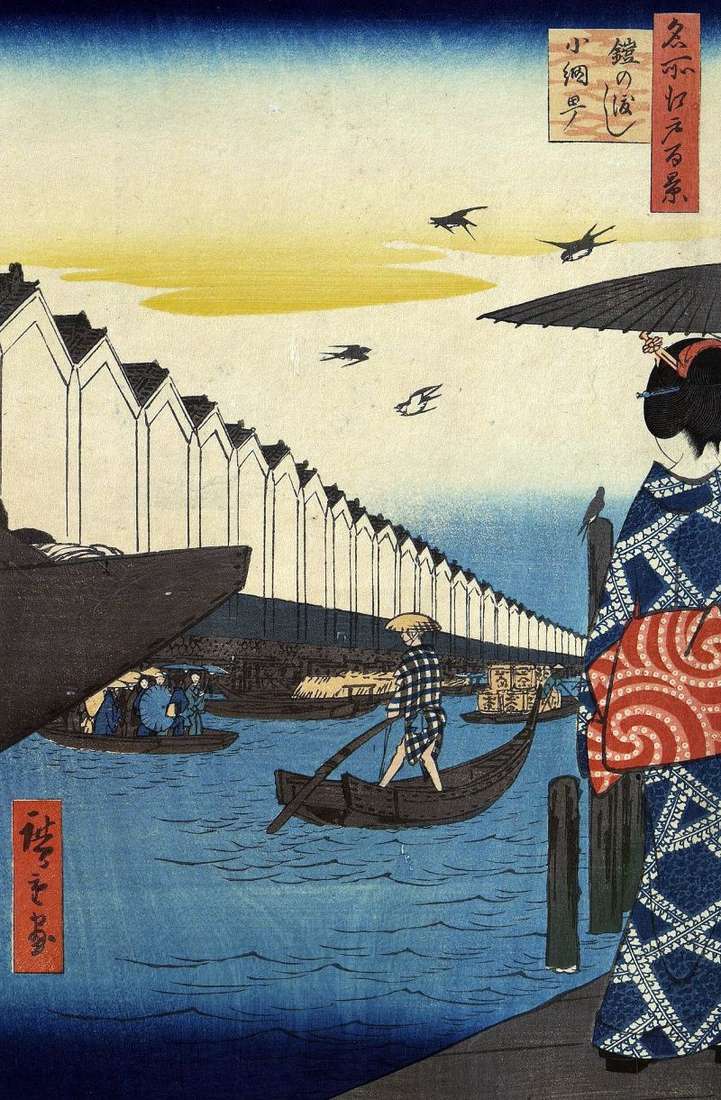 Yeroi-no Watasi crossing to Komite by Utagawa Hiroshige
Yeroi-no Watasi crossing to Komite by Utagawa Hiroshige